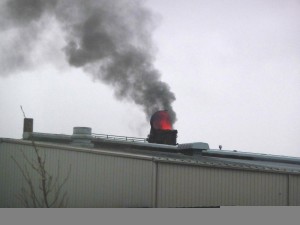In the last decade, the subject of Menstrual Hygiene Management (MHM) has witnessed an encouraging upsurge in stakeholders, asserting the need for breaking the silence that has armoured the highly inherent patriarchal socio-cultural system in India. Women’s empowerment being at the heart of the movement of MHM, the components covered include awareness drives, to help girls and women in the country to “manage menstruation”, and toilet building. Initiatives like The Great WASH Yatra and civic activism campaigns by Water Supply and Sanitation Collaborative Council (WSSCC) have placed the emphasis almost solely on de-stigmatizing menstruation to move forward and reclaim the fundamental right to life, equality, and dignity for women. Such initiatives have led to an increased use of disposable sanitary napkins, especially given the government’s directive in providing free or subsidized sanitary napkins to schoolgirls.
In recent years the dialogues around MHM have expanded to include the challenges around the disposal and management of disposable sanitary napkins. But this growing stream of reject waste, due to ambiguities inherent in India’s waste laws, confounds researchers, social workers, and policy makers alike.
In a rush to handle menstrual waste, the Indian government has been promoting the use of mini incinerators in schools and women’s sanitary complexes to burn sanitary pads. Directions issued by the Nirmal Bharat Abhiyan (NBA) guidelines in December 2013 to this effect. The official memorandum issued by the Ministry of Drinking Water and Sanitation reads: “Setting up incinerators in schools, in women’s community sanitary complexes, in primary health centres, or in any other suitable place in village, etc. can be taken up.” The more recent Swachh Bharat Swachh Vidyalaya mission’s principle design includes at least one incinerator in girl’s toilet block and niche to keep sanitary napkins. In certain states, like Tamil Nadu, UNICEF has helped to build incinerators both at schools, and also promote simple, single-chamber, iron-drum incinerators for home usage. Seizing the market potential of this government directive, corporations have developed and promoted mini electric incinerators, such as NapiBurn and Reprocide in many schools and colleges in India. And Swati Bedekar of Vatsalya Foundation, a social entrepreneur working in the field of menstrual hygiene, promotes a clay incinerator for home usage.
There are, however, serious concerns about the technology of mini incinerators, which by law have to approved by the CPCB and the State Pollution Control Board. Unfortunately as of yet, there are no provisions to monitor the emissions from these incinerators. Nor are there any independent peer-reviewed studies testifying that emissions from such incinerators do not adversely affect public health.
WHO recommends incinerating all health-related waste only at temperatures over 800 degrees, for when plastic polymer products, such as disposable pads, are burned at lower temperatures they typically release asphyxiant and irritant gases into the atmosphere. Further, the biodegradable components, such as cellulose, wood-pulp, cotton in disposable pads often contain furans and dioxins. Furans are present in pesticides that are sprayed on inorganically-grown cotton or tree plantations. And dioxins are present if a chlorine-bleach process used to bleach the cotton or wood-pulp used in sanitary napkins. Dioxins and furans are among the most deadly toxins known to science, being highly toxic even in trace quantities. When pads are burnt these toxins are released into the atmosphere and can travel a long way from the point of emission. WHO warns that “exposure to dioxins and furans may lead to the impairment of the immune system, the impairment of the development of the nervous system, the endocrine system and the reproductive functions” The Global Alliance for Incinerator Alternative recommends applying the “precautionary principle” to incinerator technology pointing out that even in high temperature incinerators (>800 °C), temperatures are not uniformly maintained, and dioxins and furans can form in cooler pockets or during start-up or shut-down periods. Given these challenges in incineration technology, in 2012, the state government of Kerala, on the recommendation of the findings of its technological committee, banned installation of mini incinerators as “they were of single chamber working in low temperature and not complying with CPCB norms.” Making similar observations about the four mini incinerators installed by the Pune Municipal Corporation, Laxmi Narayan, general secretary of SwaCH, further adds that this is waste management solution is not economically unsustainable as the operational cost of incinerating one sanitary napkin comes to Rs. 2 – including waste collection, electricity charge, etc.
Last but not least, activists maintain that rather than promoting decentralized incinerators, without any monitoring mechanisms in place, a better solution would be to declare sanitary waste as bio-medical waste, which is then incinerated in registered and approved centralized incinerators. Municipal governments are not keen on this solution given the sheer amount of menstrual hygiene waste that is generated, currently estimated at 9000 tons per month nationwide. Clearly the issue warrants peer-reviewed scientific studies and more discussion.
We at #periodofchange naturally recommend reusable menstrual hygiene products in keeping with our values of caring for our bodies and the body of the earth.
By Bindu (with inputs from Dhirendra of Azadi)





